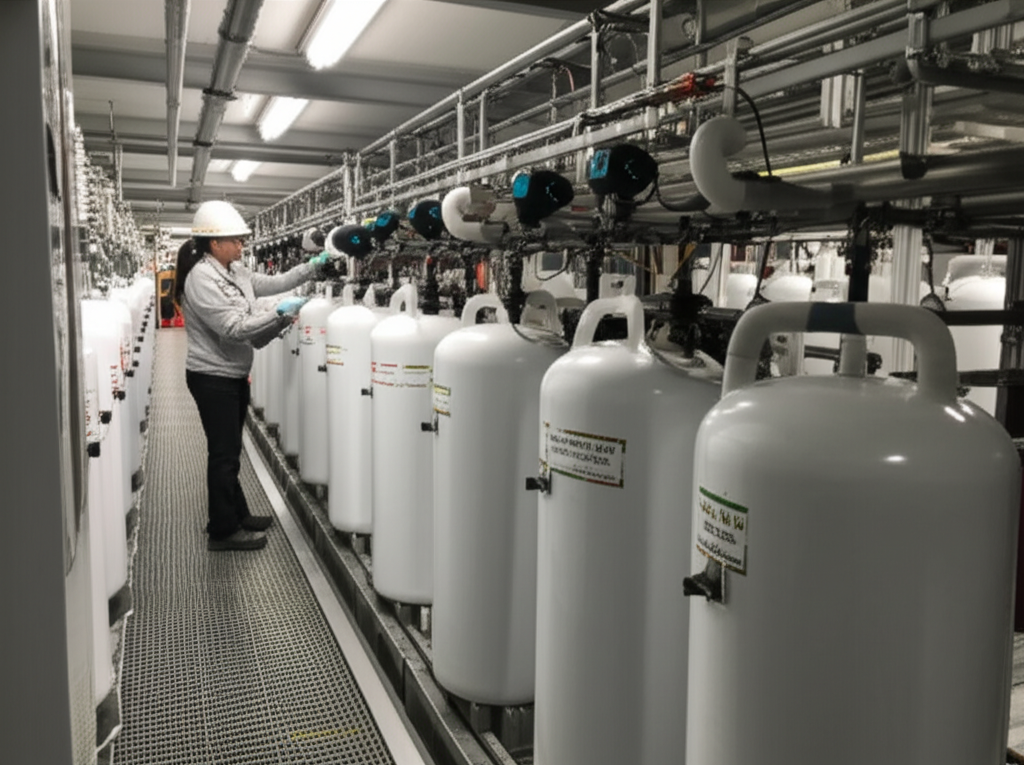The chemical industry has long grappled with inefficiencies in synthesizing dithiocarbamates—yellow, corrosive liquids with limited solubility—used in applications like pesticide formulations and rubber processing. Traditional methods suffer from complex workflows, low reaction yields under 50%, and poor product purity, often below 90%, making them costly and unfit for large-scale operations. Existing processes involve tedious purification steps and high environmental footprints, restricting productivity and driving up prices in sectors reliant on these compounds.
To overcome these hurdles, a groundbreaking synthesis method for dithiocarbamates has been developed. This innovation streamlines the production workflow, eliminating unnecessary post-reaction treatments and significantly boosting efficiency. The core advancement lies in optimizing reactant ratios and temperature controls. Carbon disulfide and carbamide (urea) are combined in a molar ratio of 3.1:1 to 4.3:1 with an alkaline solution, ensuring better molecular interaction and higher conversion rates. This ratio is critical, as minor deviations historically reduced yields by over 20%.
The six-step procedure starts with loading a reactor with carbon disulfide, carbamide, and an alkaline substance. Under constant agitation, additional carbon disulfide is dripped in while maintaining precise temperatures to prevent side reactions. The mixture is then held within a controlled thermal range during continuous stirring to promote homogeneity. Next, controlled heating triggers a sustained reaction period, followed by gradual cooling to induce crystallization. Finally, the mixture is filtered and vacuum-dried to isolate the pure dithiocarbamate product. This sequential approach minimizes energy consumption and reaction time compared to conventional multi-phase systems, enhancing repeatability in industrial settings where even slight variations can cause batch failures.
Benefits of this new process are transformative. Laboratory trials demonstrate single-pass conversion rates exceeding 90%, compared to averages below 70% in older methods, achieving product purities above 95% consistently. The simplified workflow cuts operational steps by up to 40%, reducing labor hours and waste generation, while mild reaction conditions—avoiding extreme temperatures or toxic solvents—make it environmentally benign. For instance, an implementation saw production costs drop by 30% and output volume rise twofold, highlighting its cost-effectiveness and scalability. This positions dithiocarbamates as more accessible for agrochemical and materials science applications, where purity directly impacts performance and safety regulations.
In an exemplary case, the process was applied with a carbon disulfide-to-carbamide ratio of 3.1:1, yielding high-purity dithiocarbamate in under 8 hours. Real-time monitoring ensured no by-products formed, resulting in a clean, efficient output ready for vacuum drying. The method's low environmental impact, absence of hazardous residues, and adaptability to existing reactor systems underscore its suitability for global adoption across chemical plants. As industries push for sustainability and efficiency upgrades, this innovation could revolutionize synthetic chemistry, fostering innovation in green technologies while meeting rising demand in fields like corrosion inhibitors and polymer additives, where dithiocarbamates play a pivotal role.
Overall, this advancement represents a significant leap forward for chemical synthesis. By addressing long-standing inefficiencies, it paves the way for mass production of high-quality dithiocarbamates, promising reduced operational complexities and broader industrial applicability in an era demanding eco-friendly solutions. Companies exploring this process are poised to gain competitive advantages through enhanced throughput and compliance with stringent environmental standards, driving future growth in specialty chemicals.

Manufacturing Facilities






Professional Export Experience
to Global Customers

1. 20 years of R&D, manufacturing and sales experience, serving customers in 60 countries and regions around the world;
2. Own R&D laboratory, pilot platform and large-scale production workshop, which can meet the audit requirements of global customers;
3. We can satisfy customers' perfect transition from small scale lab requirements (gram level) to commercialization requirements (hundred tons level).
A: We don't have Minimum Order Quantity, exact quantity should be provided before quotation for us to calculate the exact cost.
A: We don't provide free samples due to lots of request and expensive international courier's cost, we can deduct the sample charge after commercial order placed.
A: Our payment terms: Small or sample order: T/T IN ADVANCE. Commercial order: First order should be by T/T IN ADVANCE or L/C at sight, and following orders T/T 30~90days is acceptable subject to approval of credit application.